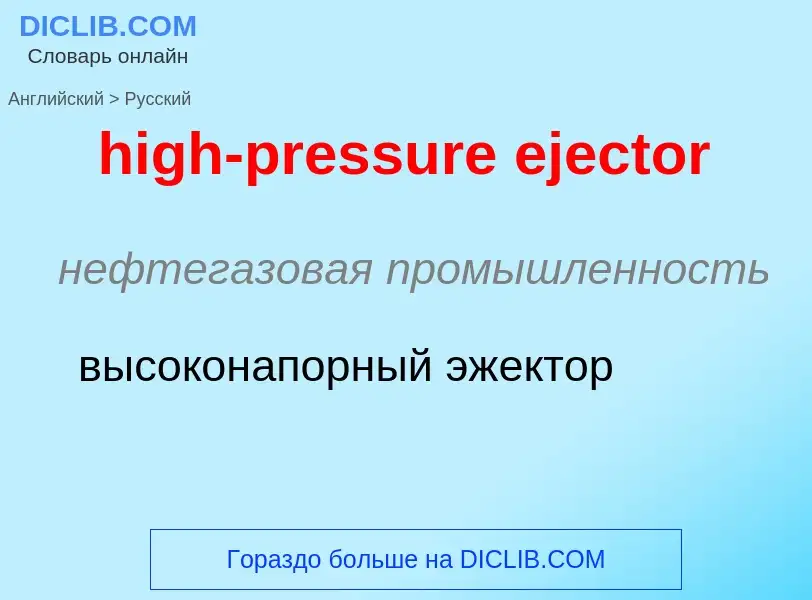Vertaling en analyse van woorden door kunstmatige intelligentie ChatGPT
Op deze pagina kunt u een gedetailleerde analyse krijgen van een woord of zin, geproduceerd met behulp van de beste kunstmatige intelligentietechnologie tot nu toe:
- hoe het woord wordt gebruikt
- gebruiksfrequentie
- het wordt vaker gebruikt in mondelinge of schriftelijke toespraken
- opties voor woordvertaling
- Gebruiksvoorbeelden (meerdere zinnen met vertaling)
- etymologie
high-pressure ejector - vertaling naar russisch
нефтегазовая промышленность
высоконапорный эжектор
общая лексика
жидкостная хроматография высокого разрешения
медицина
жидкостная хроматография высокого разрешения
высокоэффективная жидкостная хроматография
Definitie
Wikipedia

A high-pressure area, high, or anticyclone, is an area near the surface of a planet where the atmospheric pressure is greater than the pressure in the surrounding regions. Highs are middle-scale meteorological features that result from interplays between the relatively larger-scale dynamics of an entire planet's atmospheric circulation.
The strongest high-pressure areas result from masses of cold air which spread out from polar regions into cool neighboring regions. These highs weaken once they extend out over warmer bodies of water.
Weaker—but more frequently occurring—are high-pressure areas caused by atmospheric subsidence: Air becomes cool enough to precipitate out its water vapor, and large masses of cooler, drier air descend from above.
Within high-pressure areas, winds flow from where the pressure is highest, at the center of the area, toward the periphery where the pressure is lower. However, if the planet is rotating, the straight direction of the air flow from the center to the periphery is bent by the Coriolis effect. Viewed from above, the wind direction is bent in the direction opposite to the planet's rotation; this causes the characteristic spiral shape of the tropical cyclones otherwise known as hurricanes and typhoons.
On English-language weather maps, high-pressure centers are identified by the letter H. Weather maps in other languages may use different letters or symbols.




![A surface weather analysis for the [[United States]] on October 21, 2006. A surface weather analysis for the [[United States]] on October 21, 2006.](https://commons.wikimedia.org/wiki/Special:FilePath/Surface analysis.gif?width=200)


![[[HILIC]] Partition Technique Useful Range [[HILIC]] Partition Technique Useful Range](https://commons.wikimedia.org/wiki/Special:FilePath/HILIC Partition Method Graphic.png?width=200)


.jpg?width=200)
